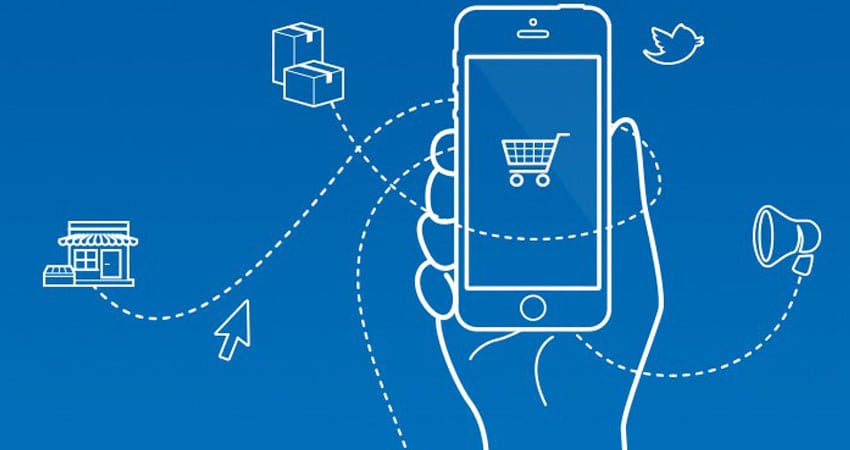Consumer behavior has evolved to the point where most retailers know that if they wait until Black Friday to start customer outreach around holiday spending, they will have already missed the boat. But those consumer shifts reach well beyond expectations for when to start looking for deals. Where consumer mobile presence for retailers was once a “nice to have” for engaging with customers for the holidays, it is now essential. According to Adobe Digital Insights, mobile sales and traffic hit record highs in 2017 – and are likely to set yet another record in 2018.
For retailers, holiday preparedness means much more than moving the first promotional email from Black Friday to November 1. It also means ensuring their omnichannel strategies are ready and waiting to meet customer expectations. Omnichannel is hard to implement – it’s a multi-year path that impacts every area of the business. So here are the essentials when it comes to meeting customer expectations – and what you can do if there’s no way to meet the need before holiday selling gets into full swing.
Overall Strategy
- Think Like A Holiday Shopper – Shop Your Own Journeys
This might seem like a no-brainer, to think like a holiday shopper, but retailers are often woefully unaware of where their customer journeys fall apart, especially as they cross touchpoints or channels. For most, “Chief Customer Officers” haven’t been around long enough to make all the changes needed to enable a cohesive customer journey.
Holiday shopping is a different mindset than shopping during other times of the year. The customer who comes to your site may not be intimately familiar with your brand or how to navigate – they’re here because they know someone who loves your brand, not because they love it themselves.
You can’t fix every customer journey gap you find in October or November. But there are many steps you could take to help bridge the gaps in the short term – a strategic pop-up or chat box, or simple POP/signage in stores. But you won’t be able to identify those simple fixes if you’re thinking like a brand fan instead of a gift-giver.
Digital
- Provide Inventory Transparency
With holiday shopping, early shoppers may be looking for inspiration, but late shoppers are looking to have the product in hand, as soon as possible. Retailers often talk about “inventory visibility” but what you really need is to provide inventory transparency – visibility not just into how much inventory you have, but an assessment of the likelihood the consumer will actually get it.
Especially when your end goal is to drive consumers to the store, you have to provide some kind of online visibility into in-store inventory levels to provide the assurance that the trip is worth it. For example, IKEA is the gold standard for online inventory visibility into stores. Not only do they provide current inventory levels, they give a projection of how that inventory level may change over the next three days – which includes both sales that might reduce inventory and replenishment that might bring inventory levels back up.
If you don’t have the ability to add inventory visibility, or worse, you don’t really trust your inventory numbers, you can still potentially share information that provides more transparency into inventory levels. IKEA reveals both specific counts – “7 pieces available” – but also gives a Red-Yellow-Green assessment of that number, that tells a shopper if the item is “Available,” “Most likely available” or “Small chance of availability.” Even if you don’t have a lot of confidence in your inventory accuracy, it still may be possible to convey what you do have by using these more general terms. And for high demand items, such as whatever is this season’s Hatchimals, nothing will do more to drive demand to stores than by publishing when the next shipment will be received at those stores.
Mobile
- Enable Save The Sale Strategies
Holiday season is increasingly becoming a mobile season. But retailers often neglect their mobile experience – they spend so much getting the desktop version to work that there just isn’t time or money left to make it work on mobile. For holidays, this is a mistake. Two areas really should be enabled on mobile for the holidays, and you should spend extra time and effort to make sure that these are high-quality customer experiences: gift card purchases and gift guides.
The need for enabling mobile gift card purchases is self-explanatory. Gift cards are becoming so popular for holidays that they are becoming the first item of choice, rather than the fallback. Gift card purchases, especially e-gift cards, are also one of the most broken experiences on mobile, especially mobile apps.
Gift guides are another save-the-sale moment. If the customer came to your store to find the “perfect gift” and it was out of stock, they need help. They’re going to turn to their mobile phone first. If you can be there with a product selection questionnaire that actually works on mobile, you can prevent that shopper from looking elsewhere. But just like with gift cards, mobile is often an after-thought for gift guides – everyone is focused on the desktop experience, even though that is no longer where the majority of the traffic is.
Bottom Line
Consumers expect an omnichannel experience, even when most of them would never use the word “omnichannel” to describe what they want. Holiday shopping, and the additional gift-giver traffic that heads your way, raises the stakes. Retailers need to be prepared to meet those expectations, no matter what it takes.
Nikki Baird is Vice President of Retail Innovation for Aptos

